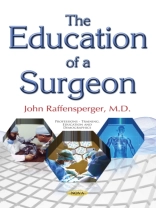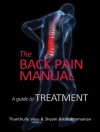The author, who graduated from medical school in 1953, has in "The Education of a Surgeon" narrated the changes in medicine over the past sixty-five years. He also tells of operations from appendectomies on ships at sea to the separation of Siamese Twins. In the mid-twentieth century, medical education and its practices had changed little since the end of the 19th century. Students learned medicine by dissecting cadavers, peering through microscopes, attending lectures and by direct study of patients at the bed side. The laboratory was an adjunct to the history and physical examination. By the end of the century, few doctors took the time to take a detailed history or to perform a complete physical examination. X-rays, scans and a distant, automated laboratory make the diagnosis. Since the time of Hippocrates, doctors cared for ‚the whole patient‘. Our professors, during the 1950’s said we could not learn it all and urged us to specialize. My classmates learned to treat patients of all ages, deliver babies and fix broken bones but became surgeons, internists, pediatricians, obstetricians and psychiatrists. We thought of ourselves as doctors first. Now, there are ’super-specialists‘ who may care for only one organ. In 1950, there were isolation hospitals for contagious diseases such as measles and scarlet fever; there were special institutions for patients with tuberculosis, poliomyelitis and rheumatic fever. Within one decade, antibiotics and vaccination essentially banished these diseases. Morphine, aspirin, digitalis, insulin, atropine and Phenobarbital, were our most commonly used drugs; doctors were amazed at the miraculous efficacy of the sulfa drugs and penicillin and used antibiotics sparingly for specific indications. By the end of the century, physicians prescribed antibiotics and other drugs almost at the whim of a patient. The discoveries of anesthesia asepsis during the 19th century laid the foundations for modern surgery. By the middle of the 20th century, surgeons operated on the brain, the lung and abdominal organs with great success. A few brave surgeons operated on the heart. At the end of the century, cardiac surgery and organ transplantation was commonplace and many operations were carried out through tiny incisions using micro-instruments and video screens. Until the end of World War II, patients either paid their doctor out of pocket or accepted charity care. Most physicians charged nominal fees; a few charged the wealthy high fees but often cared for patients in a local charity hospital or clinic. Doctors fought tooth and nail to avoid ’socialized medicine‘, but were engulfed by insurance companies and corporate medicine. This change has almost destroyed the physician-patient relationship and has enriched corporate executives in the insurance and pharmaceutical industries. Doctors should study the humanities, and ethics to better understand the human condition. Patients would fare better if doctors had a broad base of general medicine prior to specialization. Further reform should include a single payer system, the elimination of medical advertising and peer-review in special courts to adjudicate malpractice claims.
John Raffensperger
Education of a Surgeon [PDF ebook]
Education of a Surgeon [PDF ebook]
Dieses Ebook kaufen – und ein weitere GRATIS erhalten!
Format PDF ● Seiten 194 ● ISBN 9781536106152 ● Herausgeber John Raffensperger ● Verlag Nova Science Publishers ● Erscheinungsjahr 2017 ● herunterladbar 3 mal ● Währung EUR ● ID 7216263 ● Kopierschutz Adobe DRM
erfordert DRM-fähige Lesetechnologie












